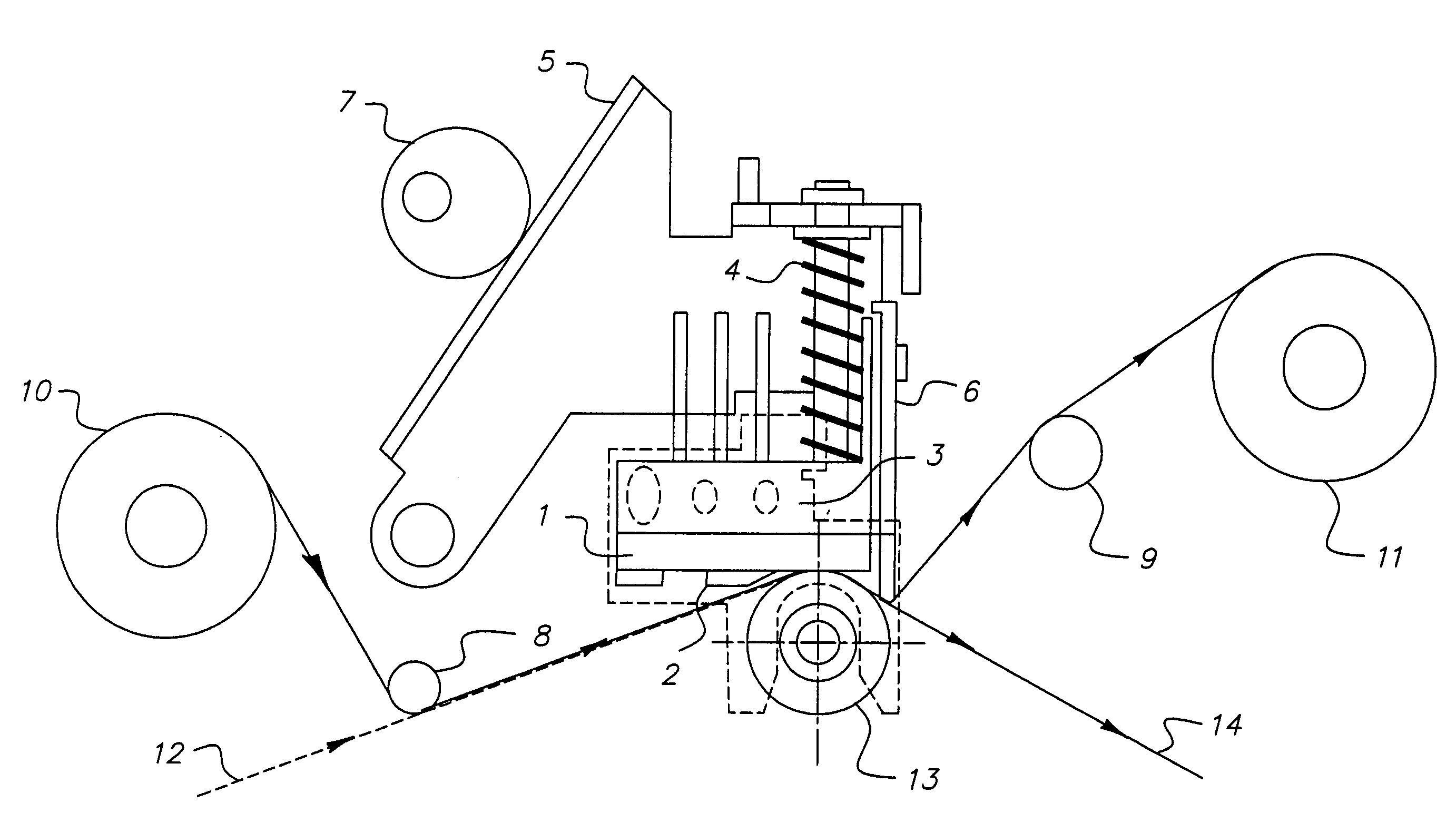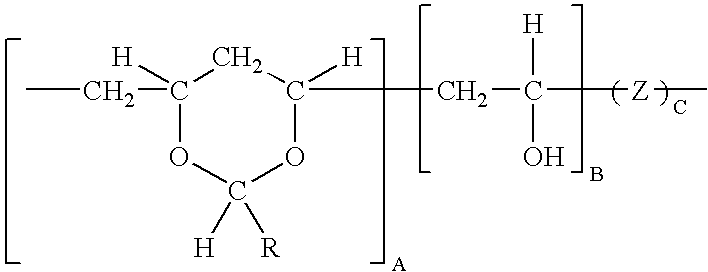Method of transferring a protective overcoat to a dye-donor element
a technology of dye-donor elements and protective overcoats, applied in diffusion transfer processes, instruments, nuclear engineering, etc., can solve the problems of inability to eliminate these problems, reduce the gloss of laminated prints, and inability to eliminate them. , to achieve the effect of improving increasing the gloss of the print, and improving the effect of the
- Summary
- Abstract
- Description
- Claims
- Application Information
AI Technical Summary
Benefits of technology
Problems solved by technology
Method used
Image
Examples
examples
Printing
[0071]This example shows improved gloss from adjustment of stripper plate assembly according to the present invention. Using KODAK Photo Printer® Kit 6400 (Eastman Kodak Co. Catalog No. 180-2016) receiver with the test color ribbon given below and a KODAK Photo Printer® 6400, a Status A neutral density image with a maximum density of at least 2.3 was printed on the receiver described above.
[0072]The color ribbon-receiver assemblage was positioned on an 18 mm platen roller and a thermal print head with a load of 3.18 Kg pressed against the platen roller. The thermal print head has 1844 independently addressable heaters with a resolution of 300 dots / inch and an average resistance of 4800 ohms. The imaging electronics were activated when an initial print head temperature of 37° C. had been reached. The assemblage was drawn between the printing head and platen roller at 70.5 mm / sec (1.2 ms line time) for yellow, magenta and cyan, 42 mm / sec (2.0 ms line time) for clear protective...
PUM
| Property | Measurement | Unit |
|---|---|---|
| time | aaaaa | aaaaa |
| time | aaaaa | aaaaa |
| time | aaaaa | aaaaa |
Abstract
Description
Claims
Application Information
 Login to View More
Login to View More - R&D
- Intellectual Property
- Life Sciences
- Materials
- Tech Scout
- Unparalleled Data Quality
- Higher Quality Content
- 60% Fewer Hallucinations
Browse by: Latest US Patents, China's latest patents, Technical Efficacy Thesaurus, Application Domain, Technology Topic, Popular Technical Reports.
© 2025 PatSnap. All rights reserved.Legal|Privacy policy|Modern Slavery Act Transparency Statement|Sitemap|About US| Contact US: help@patsnap.com



